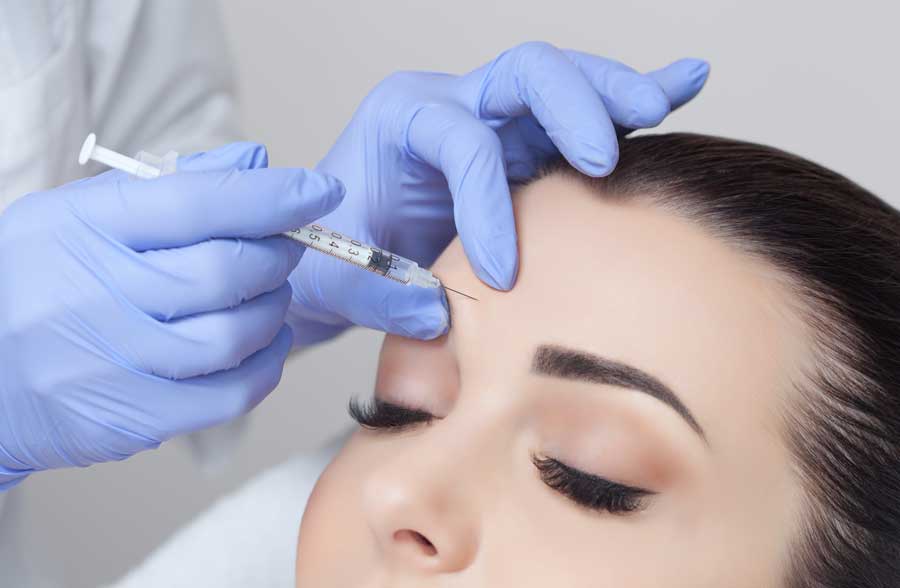Great skin doesn’t happen by chance, it happens with an appointment!
Diminish the Appearance of Deep Set Wrinkles/Expression Lines and Creating Volume in Areas of the Face
Botox®️ and fillers are two types of injectables, which are both injected with a needle. The biggest difference between Botox®️ and fillers is that Botox®️ is used to reduce fine lines and wrinkles by paralyzing the underlying muscles, fillers on the other hand will fill in wrinkles.
What is Botox?
Botox is a purified form of the botulinum toxin
that is obtained from bacteria. Though it is deadly in larger amounts, the tiny, regulated amount of Botox given to correct wrinkles has been used safely for decades.
Botox works by blocking nerve signals in the muscles where it is injected. When those nerve signals are interrupted, the affected muscle is temporarily paralyzed or frozen. Without movement of these selected muscles in the face, certain wrinkles may be softened, reduced, or even removed.
Botox and other treatments made with botulinum toxin are sometimes called neuromodulators or neurotoxins.
Treatments made with botulinum toxin are sold under the brand names Botox Cosmetic, Dysport, and Xeomin.
What can Botox correct?
Botox only works on wrinkles that are caused by muscle movement. These are known as dynamic wrinkles, and are often called “expression lines.”
The most common dynamic wrinkles that Botox can treat are lines on the upper face, such as the “11” between the brows, horizontal lines on the forehead, and crow’s feet around the eyes. These lines are caused by smiling, frowning, squinting, and other facial expressions.
Botox will not work on fine lines and wrinkles caused by sagging or loss of plumpness in the face. These are known as static wrinkles. Static wrinkles include lines in the cheeks, neck, and jowl areas.
Botox is not a permanent treatment. Repeated treatments are necessary for continued wrinkle-reducing effects. Most people find that the muscle-relaxing effect of Botox lasts for 4 to 6 months.
Cost $10 per unit

What are dermal fillers?
Share on Pinterest
Dermal fillers may help to plump up thinning lips.
Dermal fillers, sometimes called soft tissue fillers, are substances designed to be injected beneath the surface of the skin to add volume and fullness.
Substances used in dermal fillers include:
• Calcium hydroxylapatite, which is a mineral-like compound found in bones.
• Hyaluronic acid, which is found in some fluids and tissues in the body that add plumpness to the skin.
• Polyalkylimide, a transparent gel that is compatible with the body.
• Polylactic acid, which stimulates the skin to make more collagen.
• Polymethyl-methacrylate microspheres (PMMA), a semi-permanent filler
Each one of these is designed to treat different signs of aging or other cosmetic issues.
The time they take to work, as well as how long they last, also vary. Some fillers last 6 months, while others last up to 2 years or longer.
What can dermal fillers correct?
Different types of dermal fillers are designed to treat varying signs of aging. Depending on the filler selected, they may:
• plump up thinning lips
• enhance or fill in shallow areas on the face
• decrease or remove the shadow or wrinkle under the eyes caused by the lower eyelid
• fill in or soften the look of recessed scars
• fill in or soften static wrinkles, especially on the lower face
• Cost $600 per 1ml


